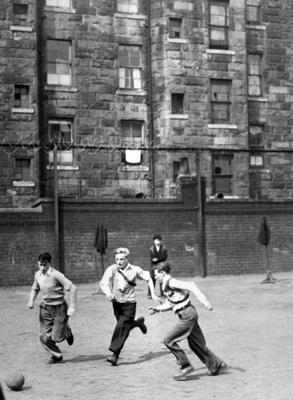is a book by the Russian Bolshevik leader Leon Trotsky, published in 1937, analyzing and criticizing Stalinism and the post-Lenin development in the Soviet Union. Trotsky wrote the book during his exile in Norway.
With the revolution of 1917, the Russian people transformed their country into a workers' republic - but less than a decade later, Stalin and his bureaucrats seized power, leading to the state's corruption and ultimate decay. In this critique of Stalinism from the Marxist standpoint, Trotsky provides a brilliantly prescient analysis of the inevitable collapse of the Soviet Union that reveals the roots of the region's current unrest.
With the revolution of 1917, the Russian people transformed their country into a workers' republic - but less than a decade later, Stalin and his bureaucrats seized power, leading to the state's corruption and ultimate decay. In this critique of Stalinism from the Marxist standpoint, Trotsky provides a brilliantly prescient analysis of the inevitable collapse of the Soviet Union that reveals the roots of the region's current unrest.
Written; 1936.First published: 1937.Translated. by Max Eastman.Transcribed for the Internet: by Zodiac between August 1993 and March 1996.
INTRODUCTION: The Purpose of the Present Work
I. – WHAT HAS BEEN ACHIEVED
The Principal Indices of Industrial GrowthComparative Estimates of These AchievementsProduction per Capita of the Population
II. – ECONOMIC GROWTH AND THE ZIGZAGS OF THE LEADERSHIP
“Military Communism”, “The New Economic Policy” (NEP) and the Course Toward the KulakA Sharp Turn: “The Five-Year Plan in Four Years” and “Complete Collectivization”
III. – SOCIALISM AND THE STATE
The Transitional RegimeProgram and RealityThe Dual Character of the Workers’ State“Generalized Want” and the GendarmeThe “Complete Triumph of Socialism” and the “Reinforcement of the Dictatorship”
IV. – THE STRUGGLE FOR THE PRODUCTIVITY OF LABOR
Money and Plan“Socialist” InflationThe Rehabilitation of the RubleThe Stakhanov Movement
V. – THE SOVIET THERMIDOR
Why Stalin TriumphedThe Degeneration of the Bolshevik PartyThe Social Roots of Thermidor
VI. – THE GROWTH OF INEQUALITY AND SOCIAL ANTAGONISMS
Want, Luxury and SpeculationThe Differentiation of the ProletariatSocial Contradictions in the Collective VillageThe Social Physiognomy of the Ruling Stratum
VII. – FAMILY, YOUTH AND CULTURE
Thermidor in the FamilyThe Struggle against the YouthNationality and Culture
VIII. – FOREIGN POLICY AND THE ARMY
From “World Revolution” to Status QuoThe League of Nations and the Communist InternationalThe Red Army and Its DoctrinesThe Abolition of the Militia and the Restoration of Officers’ RanksThe Soviet Union in a War
IX. – SOCIAL RELATIONS IN THE SOCIAL UNION
State Capitalism?Is the Bureaucracy a Ruling Class?The Question of the Character of the Soviet Union Not Yet Decided by History
X. – THE SOVIET UNION IN THE MIRROR OF THE NEW CONSTITUTION
Work “According to Ability” and Personal PropertyThe Soviets and DemocracyDemocracy and the Party
XI. – WHITHER THE SOVIET UNION?
Bonapartism as a Regime of CrisisThe Struggle of the Bureaucracy with “the Class Enemy”The Inevitability of a New Revolution
I. – WHAT HAS BEEN ACHIEVED
The Principal Indices of Industrial GrowthComparative Estimates of These AchievementsProduction per Capita of the Population
II. – ECONOMIC GROWTH AND THE ZIGZAGS OF THE LEADERSHIP
“Military Communism”, “The New Economic Policy” (NEP) and the Course Toward the KulakA Sharp Turn: “The Five-Year Plan in Four Years” and “Complete Collectivization”
III. – SOCIALISM AND THE STATE
The Transitional RegimeProgram and RealityThe Dual Character of the Workers’ State“Generalized Want” and the GendarmeThe “Complete Triumph of Socialism” and the “Reinforcement of the Dictatorship”
IV. – THE STRUGGLE FOR THE PRODUCTIVITY OF LABOR
Money and Plan“Socialist” InflationThe Rehabilitation of the RubleThe Stakhanov Movement
V. – THE SOVIET THERMIDOR
Why Stalin TriumphedThe Degeneration of the Bolshevik PartyThe Social Roots of Thermidor
VI. – THE GROWTH OF INEQUALITY AND SOCIAL ANTAGONISMS
Want, Luxury and SpeculationThe Differentiation of the ProletariatSocial Contradictions in the Collective VillageThe Social Physiognomy of the Ruling Stratum
VII. – FAMILY, YOUTH AND CULTURE
Thermidor in the FamilyThe Struggle against the YouthNationality and Culture
VIII. – FOREIGN POLICY AND THE ARMY
From “World Revolution” to Status QuoThe League of Nations and the Communist InternationalThe Red Army and Its DoctrinesThe Abolition of the Militia and the Restoration of Officers’ RanksThe Soviet Union in a War
IX. – SOCIAL RELATIONS IN THE SOCIAL UNION
State Capitalism?Is the Bureaucracy a Ruling Class?The Question of the Character of the Soviet Union Not Yet Decided by History
X. – THE SOVIET UNION IN THE MIRROR OF THE NEW CONSTITUTION
Work “According to Ability” and Personal PropertyThe Soviets and DemocracyDemocracy and the Party
XI. – WHITHER THE SOVIET UNION?
Bonapartism as a Regime of CrisisThe Struggle of the Bureaucracy with “the Class Enemy”The Inevitability of a New Revolution


.jpg)




